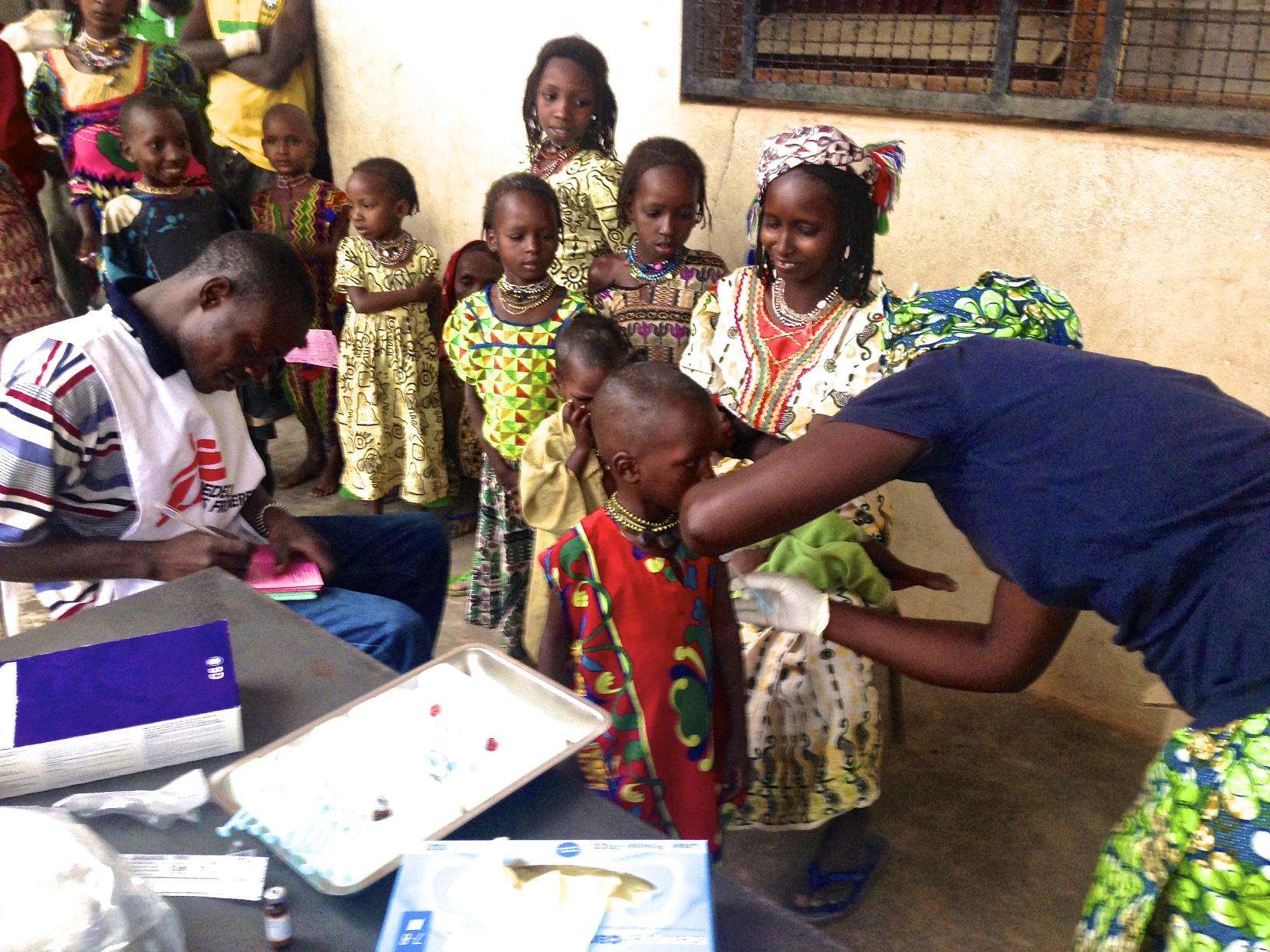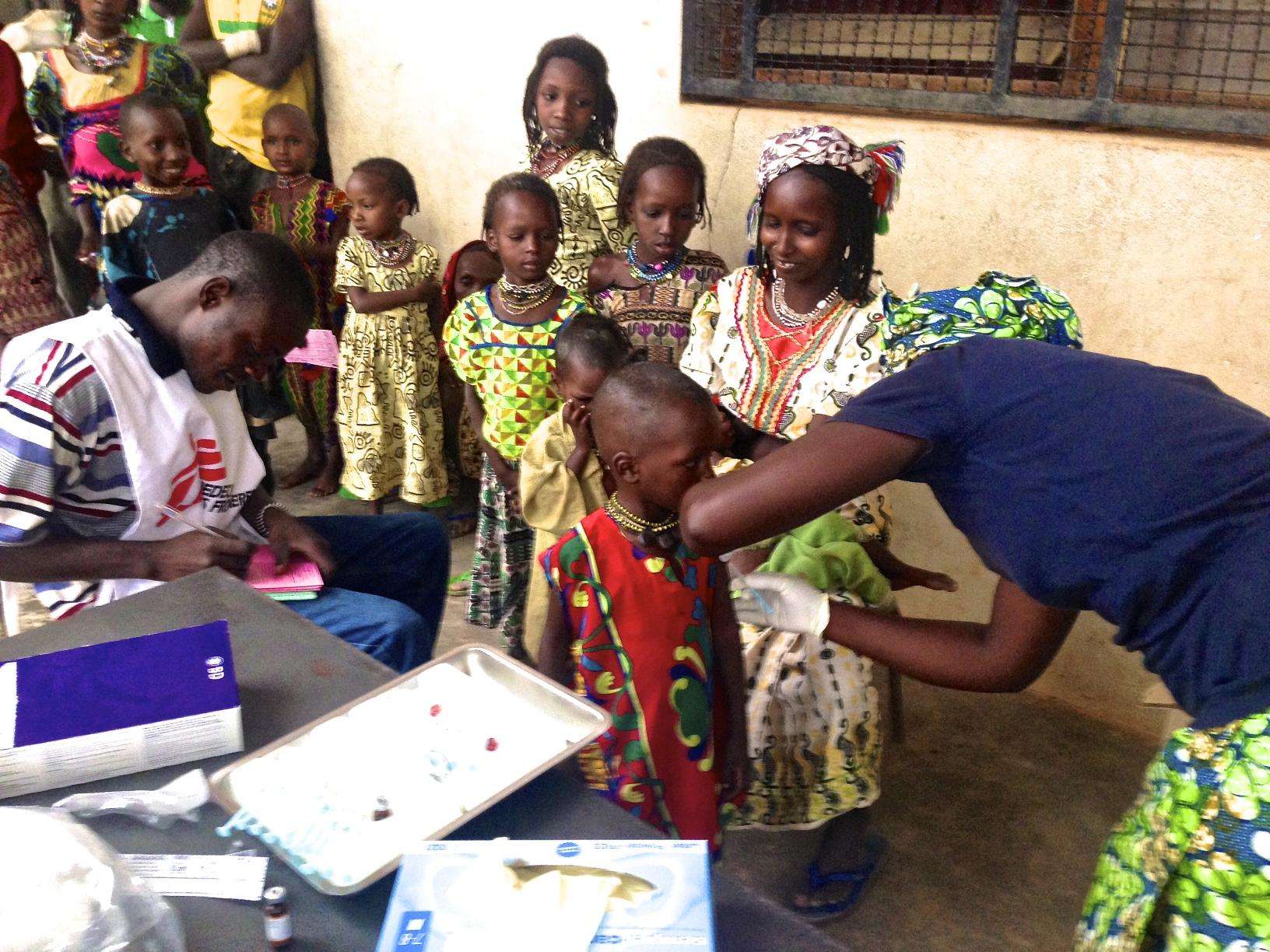Doctors Without Borders/Médecins Sans Frontières (MSF) medical doctor Natalie Roberts recently spent three months in conflict-riven Central African Republic (CAR). Here she reflects on her time providing care in the country's northwest region.
As soon as I got off the plane in Bozoum I was told that there had been a mass casualty event and they needed me at the hospital. The airport is about five kilometers [about three miles] out of town, and every house on the way had been burnt when a wave of violence swept through northwest Central African Republic during December, January, and February. There were so many rumors and so much fear that everyone just fled.
We drove quickly into the town, not really sure what we were going to find. When I arrived at the hospital I was taken to the sickest patient, a man who had been shot. I treated him while the rest of the team dealt with the more minor injuries.
Mass Casualty
At the time there were just five or six patients. The team told me that the Muslim patients had not come to the hospital yet because they were too afraid that they would be attacked. About an hour later, 18 patients arrived all at once.
The wounded had lots of shrapnel injuries caused by a grenade which had been thrown into the Muslim quarter and exploded; others had gunshot wounds from the shooting that followed. One guy had an injury to his eye, and there were some head injuries.
We had to make a difficult decision about one patient in particular. He had a bullet wound to the groin which had gone through his femoral artery. His injury didn’t look so bad at first glance. The entry wound was quite small, but when you turned him over you could see that the exit wound was bigger, and was bleeding profusely—there was a big puddle of blood on the floor.
He wouldn’t have survived an operation or a transfer. We were hoping that his blood would clot, so we gave him six units of blood—which was difficult without a blood bank—but he carried on bleeding and died overnight at the hospital.
It was very frustrating. It was just a small wound, right at the point where it would cause a lot of damage—damage that you just could not repair. If it had been just a couple of centimeters [to] either side he might have survived.
Funeral Drums
In Central African Republic, people commemorate the dead overnight with drums. The funeral ground is quite close to the hospital in Bozoum, and close to where we were sleeping, so when there was a death in the hospital, you then had drums all night. It doesn’t let you forget that someone has died.
That night, most of the patients didn’t want to sleep at the hospital—they didn’t think it was safe, so the next day we went to the Muslim quarter to carry on treating the wounded. It was clear that people were preparing to leave—they were emptying their houses of all of their belongings; mats and bedding were being piled up in the streets. The attack on the Muslim quarter had been the final straw, and news had come that a convoy would pick people up and take them to Chad. Most of these people were from CAR, and had lived their whole lives in Bozoum—they had businesses, houses, families, and a community there. They were not really talking about what had happened to them—they were just resigned to leaving.
The convoy of trucks arrived two or three days later. We counted the numbers of trucks coming in and counted the numbers coming out. We were aware that this could be a big flashpoint, as convoys had been attacked in the past. It also wasn’t clear if there was going to be enough space for the whole community, and we were worried that an even more marginalized population would be left behind.
As it turned out, the entire population—two or three thousand people—did board the 14 trucks. It was hot and it was a seven-hour journey to the border. The trucks were piled high with people and their belongings. It wasn’t clear where people were going to sleep, and even though they had an armed escort, it wouldn’t stop them coming under attack.
Our team just stood and watched; there was nothing we could do. An entire community had been devastated. We knew that the same thing was happening in most of the other towns across the northwest—that people were making the same desperate choice to leave their homes to live in a refugee camp.
A Thousand Different Stories
Soon after, the project coordinator and I left Bozoum to explore the rest of the northwest, from a town called Bosemptele, south of Bozoum, up to the border with Chad and Cameroon.
When I arrived at the first village, the head of the health post said that he wanted to show me something. He asked everyone in the village to bring their sick children to me. The first child I saw was very small, was obviously suffering from malaria, and looked very unwell. I offered to take the child back to the hospital in Bozoum, but the mother said it was too far and she didn’t feel safe leaving her village. I felt completely helpless; the child really needed hospital treatment, but all I could do was give them some medicines out of the emergency kit that I had with me.
At that point I realized that we had to get out into the villages more—we couldn’t base ourselves in one town, because people were too scared to leave their villages, and there were not enough roads or transport. I had arrived thinking that I would see war trauma, but it became clear that, outside Bangui, far more people were dying of normal African diseases—malaria and ill health.
People had fled their homes, and many of their houses had been burnt, so they were living out in the fields or in the bush, sleeping on the ground or under trees. In the villages, people have wells, but in the bush people are just drinking whatever water they can find, often from puddles or rivers.
Every health post we visited was in a bad state—any medicines they had had been burnt, stolen or looted—people had no access to health care. We heard that people were dying in the bush, but it is very difficult to know how many people have died—you hear a thousand different stories but you can’t confirm these things.
So we started running clinics in the villages—we were seeing 600 to 700 children in a morning—and eventually we set up a pediatric hospital for malaria in Bocaranga.
Small Clinics, Small Differences
In those first few weeks we felt scared at times. In February there was still so much violence happening and there were still armed groups around. You would hear rumors and the next day you would go to a village and find houses that were still burning.
In villages, what happens is that the attackers go from door to door. People don’t have sophisticated weapons, it is personal violence—face-to-face. At one point, everybody on the street was carrying some form of weapon. Even small children of six or seven were walking around with big machetes. People have guns and machetes because they live in the bush and, even in the towns, they work in fields—they don’t have an industrialised lifestyle. It doesn’t take much for guns and machetes to be adapted into the war environment. Tensions rise, everybody is afraid, and if you have a gun you are more likely to kill somebody.
After a violent incident, we would see machete or bullet wounds, which can get dirty and infected. We saw a lot of patients who had been beaten—you can kill someone with a stick. Often people wouldn’t tell you how it had happened, but you can imagine that it had to be pretty brutal. I’ve seen bombs and other violence, but face-to-face violence is difficult to handle and comprehend.
Everybody would tell you who they had lost, and thinking about how they had lost them was sad. I went to one village where 23 people had died after door-to-door attacks and one month on they were still reliving it—they were not coping.
What is hard is that it is almost impossible to see how and when this will end. It has affected the whole country. But when you come back to visit a health post that you are supporting and see everything working, it is wonderful. They are only small clinics, small differences, but together they add up to so much more.





